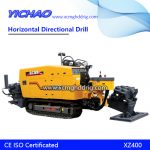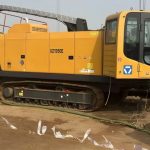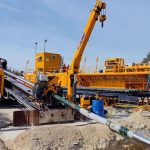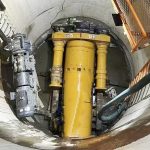Categories
Latest Updates





China’s bentonite resources are very rich, including calcium-based bentonite and sodium-based bentonite, in addition to hydrogen-based, aluminum-based, sodium-calcium-based and unclassified bentonite. Bentonite, also known as bentonite, etc., is a clay rock with montmorillonite (also known as microcrystalline kaolinite, kaolinite) as the main component – montmorillonite clay rock, often containing a small amount of illite, kaolinite Stone and zeolite, feldspar, calcite, etc. Montmorillonite is a small amount of alkali and alkaline earth metal hydrous aluminosilicate minerals, and its chemical formula is Nax(H2O)4{(Al2~xMg0.)[Si4O10](OH)2}. Due to the existence of interlayer water and interlayer exchangeable cations in montmorillonite, bentonite can be divided into sodium-based bentonite (alkaline soil) and calcium-based bentonite according to the type, content and crystalline chemical properties of exchangeable cations contained in montmorillonite. (alkaline earth) and natural bleaching earth (acidic earth). Among them, calcium-based bentonite includes calcium-sodium-based, calcium-magnesium-based and other bentonites. The main exchange cations of alkaline soils are Na+ (and K+), and the alkaline coefficient is greater than or equal to 1. The main exchange cations of alkaline soils are Ca2+, Na+ or Ca2+, Mg2+, etc., and the alkaline coefficient is less than 1. The main exchange cations of acidic soils are H+(Al3+).
1) Physical properties
Bentonite is generally white and light yellow, and because of its different iron content, it is light gray, light green pink, brown red, black and other colors. Some bentonites are loose like soil, and some are dense and hard.
2) Chemical composition
The main chemical components of bentonite are silicon dioxide (SiO2), aluminum oxide (Al2O3) and water (H2O). The content of iron oxide and magnesium oxide is sometimes higher, and calcium, sodium, potassium, etc. often exist in bentonite in different contents. The content of Na2O and CaO in bentonite has a great influence on the physical and chemical properties and technological performance of bentonite.
3) Physical and chemical properties
Bentonite has strong hygroscopicity and expands after absorbing water, and the expansion number can reach 30 times. It can be dispersed in aqueous medium as a colloidal suspension, and this suspension has certain viscosity, thixotropy and lubricity. It is malleable and cohesive in admixtures with fine detrital substances such as water, mud or sand. It has strong cation exchange capacity. It has a certain adsorption capacity for various gases, liquids and organic substances, and the maximum adsorption capacity can reach 5 times its weight. The acid bleaching earth with surface activity can adsorb colored substances.
The physical and chemical properties of bentonite mainly depend on the type and content of montmorillonite it contains. Generally, sodium-based bentonite has superior physical and chemical properties and technological performance compared with calcium-based or magnesium-based bentonite. Mainly in: the water absorption speed is slow, but the water absorption rate and expansion ratio are large; the cation exchange capacity is high; the dispersibility in the aqueous medium is good, and the colloidal price is high; its colloidal suspension has thixotropy, viscosity, and lubricity. Good, PH value High; good thermal stability; high plasticity and strong adhesion; high hot wet tensile strength and dry compressive strength. Therefore, the use value and economic value of sodium bentonite are relatively high.
The instrument for measuring the density of mud is currently the most commonly used density scale. When measuring, fill the mud cup in the mud cup, and after adding the lid, let the excess mud overflow from the center hole of the cup lid. After wiping the mud cup surface dry, place the lever on the stand (the main blade sits on the main blade pad). Move the slider so that the lever is horizontal (the horizontal bubble is in the center). Read the scale on the left side of the running code, which is the density value of the mud. Before measuring the mud density, calibrate the instrument with clean water. If the reading is not at 1.0, it can be adjusted by increasing or decreasing the metal particles in the small box at the right end of the lever.
The density of mud refers to the ratio of the weight of the mud to the weight of a specified volume of water. The size of the mud density measured on site during construction mainly depends on the sum of the weight of mud-making clay and the weight of drill cuttings in the mud. When other substances such as admixtures are added, the weight of the admixtures must also be included.
Drilling in sand, gravel, pebble and broken zone formations, due to the lack of cementation between particles, the hole wall is easy to collapse during drilling, so it is very difficult to form a hole. For such formations with mud wall protection, the key to solving the problem is to increase the cementation force between the particles on the pore wall. The more viscous mud infiltrates into the pore wall stratum properly, which can obviously enhance the cementing force between sand and gravel, thereby enhancing the stability of the pore wall. The increase of mud viscosity is mainly achieved by using high dispersion mud (finely dispersed mud), increasing the clay content in the mud, adding organic or inorganic tackifiers and other measures. Finely dispersed mud is a dispersed mud with salt content less than 1%, calcium content less than 120ppm, and no inhibitory polymer. In addition to clay, Na2CO3 and water, in order to meet the needs of drilling, it is often added with viscosity-increasing agent, water-loss reducing agent and anti-flocculating agent (diluent). According to the different treatment agents added, there are different types, such as sodium carboxymethyl cellulose mud, iron-chromium salt mud, lignosulfonate mud and humic acid mud. There have been many successful projects for drilling in sand and gravel formations, including quicksand formations, with higher viscosity finely dispersed muds.
As the mud density increases, the ROP decreases, especially when the mud density is greater than 1.06-1.10 g/cm3, the ROP decreases significantly. The density of the mud is the same, the higher the viscosity, the lower the ROP.
The content of cuttings in the mud will cause great harm to drilling. Poor purification in the hole will cause the drilling block, and may cause suction, pressure excitation, etc., resulting in leakage or well collapse. The sand content is high, and the precipitation in the pores is thick. It will cause the hydration and collapse of the hole wall, and it is easy to cause the mud skin to fall off and cause accidents in the hole. At the same time, the content of sediment is high, and the wear and tear of pipes, drill bits, pump cylinder liners and piston rods is large, and the service life is short. Therefore, under the premise of ensuring the balance of formation pressure, the mud density and sand content should be reduced as much as possible.
In soft soil layers, too little mud density or too fast drilling speed will lead to hole collapse. Usually it is better to keep the mud density to 1.25g/cm3 in this soil layer.
Knowledge Sharing: Trenchless Mud Proportion
There are many kinds of mud in engineering, but according to its chemical composition, it can be classified into the following types, and its proportioning method is as follows:
The mud is the most common type of viscosity-raising mud, and Na-CMC can further improve viscosity and reduce water loss. The formula is: high-quality pulping clay 150-200g, water 1000ml, soda ash 5-10Kg, Na-CMC about 6kg. The mud properties are: density 1.07~1.1 g/cm3, viscosity 25~35s, water loss less than 12ml/30min, pH value of about 9.5.
The mud is viscous and stable, and the iron-chromium salt plays the role of anti-flocculation (dilution). The formula is: clay 200g, water 1000ml, soda ash solution with 50% concentration, adding about 20%, iron-chromium salt solution with 20% concentration, adding 0.5%, and Na-CMC 0.1%. The mud properties are: density 1.10 g/cm3, viscosity 25s, water loss 12ml/30min, pH value 9.
Lignin sulfonate is obtained from sulfite pulp waste liquid, and is generally used in conjunction with coal alkali agent to solve the anti-flocculation and water loss reduction of mud on the basis of increasing viscosity. The formula is 100-200kg of clay for 1m3 mud, 30-40kg of sulfite pulp waste liquid, 10-20kg of coal alkali agent, 5-10kg of NaOH, 5-10kg of defoamer, and 900-1000L of water. The mud properties are: density 1.06~1.20 g/cm3, funnel viscosity 18~40s, water loss 5~10ml/30min, 0.1~0.3kg Na-CMC can be added to further reduce water loss during drilling.
Humic acid mud is stabilized with coal alkali agent or sodium humate, which can be used in conjunction with other treatment agents such as Na-CMC. amount), 3~5kg Na2CO3, 900~1000L water. Mud performance: density 1.03~1.20 g/cm3, water loss 4~10ml/30min, pH value 9.
